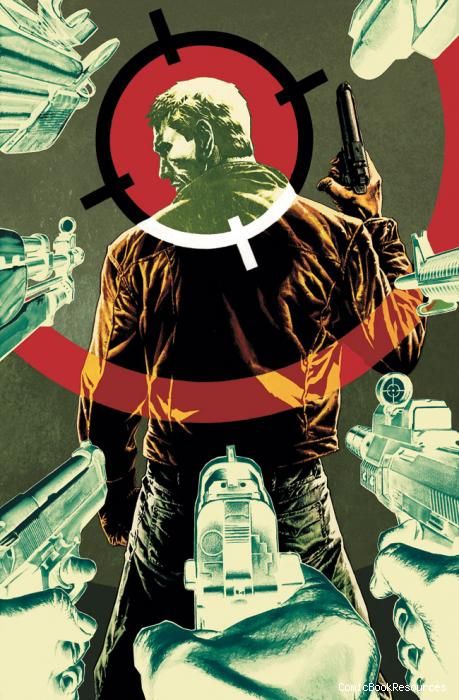It makes sense for DC to release a "Human Target" series a month after the TV series debuted on Fox, and even more sense to have it take place within the world of the show instead of the DCU or the Vertigo series' world. Why alienate potential new readers who want more stories that fall in line with the TV show? Unfortunately, what makes the TV series work, like Mark Valley's charm or the funny interplay between Chi McBride and Jackie Earle Haley, isn't present in the comic. All that's left is the bare bones of the show with serviceable art.
The plot is a pretty mundane one that lends itself well to multiple issues, as Chance is hired by the US government to bring them a mafia boss that wants to make peace with God before dying. However, getting him away from his people is only the first step as the mafia boss has stashed evidence of his organization's activities all around the world and those pieces of evidence have to be collected before Chance can turn him over to the government.
Right off the bat, Len Wein deviates from the show in a somewhat distracting manner by adding first-person narration by Christopher Chance, which carries through the issue. Instead of trusting the reader to keep up and figure things out, the narration spells everything out in painfully obvious detail, hurting the flow of the issue. Since the comic takes place in the same world as the TV series, this difference is mystifying and works against the quickly paced, 'catch up as you go' nature of the show's storytelling. As well, Winston and Guerrero are shunted off to the side quickly, leaving the focus on Chance, a fairly boring character when not played by Mark Valley.
The art doesn't focus on replicating the actors, thankfully, simply presenting their characters in similar visual terms. A weakness in many licensed books is stiff, posed figure work as the artist works off stills of the actors, but Bruno Redondo sidesteps that here, though doesn't completely avoid stilted, lifeless art. The characters look awkward throughout the issue with facial expressions that don't match what's going on and their bodies put in unrealistic, stiff positions. His use of shadows also varies throughout the issue where, most of the time, there's little, but, suddenly, in one panel, Chance's face will be heavily masked by shadow for no apparent reason.
Redondo is shown up in the issue's back-up story, featuring art by Chris Sprouse. The two's styles aren't dissimilar, particularly, because of Jonny Rench coloring of both, the two stories blend into one another almost. However, Sprouse's art is much more polished and naturalistic. The back-up story is only six pages, written by the TV show's executive producer Peter Johnson, and is, what looks to be, the first part of a series of thematically-based stories centering on scars Chance has received in the past. It's fluffy and not engaging.
All in all, "Human Target" #1 seems like an attempt at DC to cater to the TV show's fanbase, but the execution doesn't replicate anything that makes the show interesting or worth watching. Wein's writing is plodding and slow, especially the narration, and lacks much of the wit and charm without the show's three stars.

